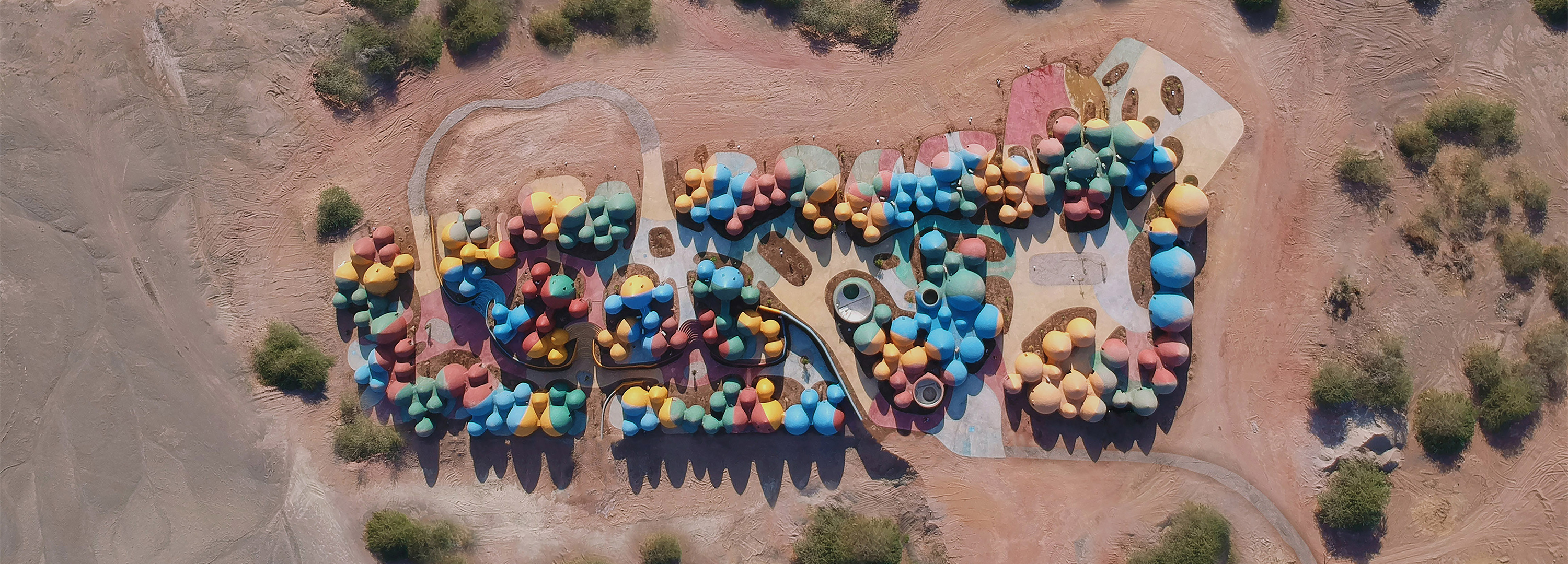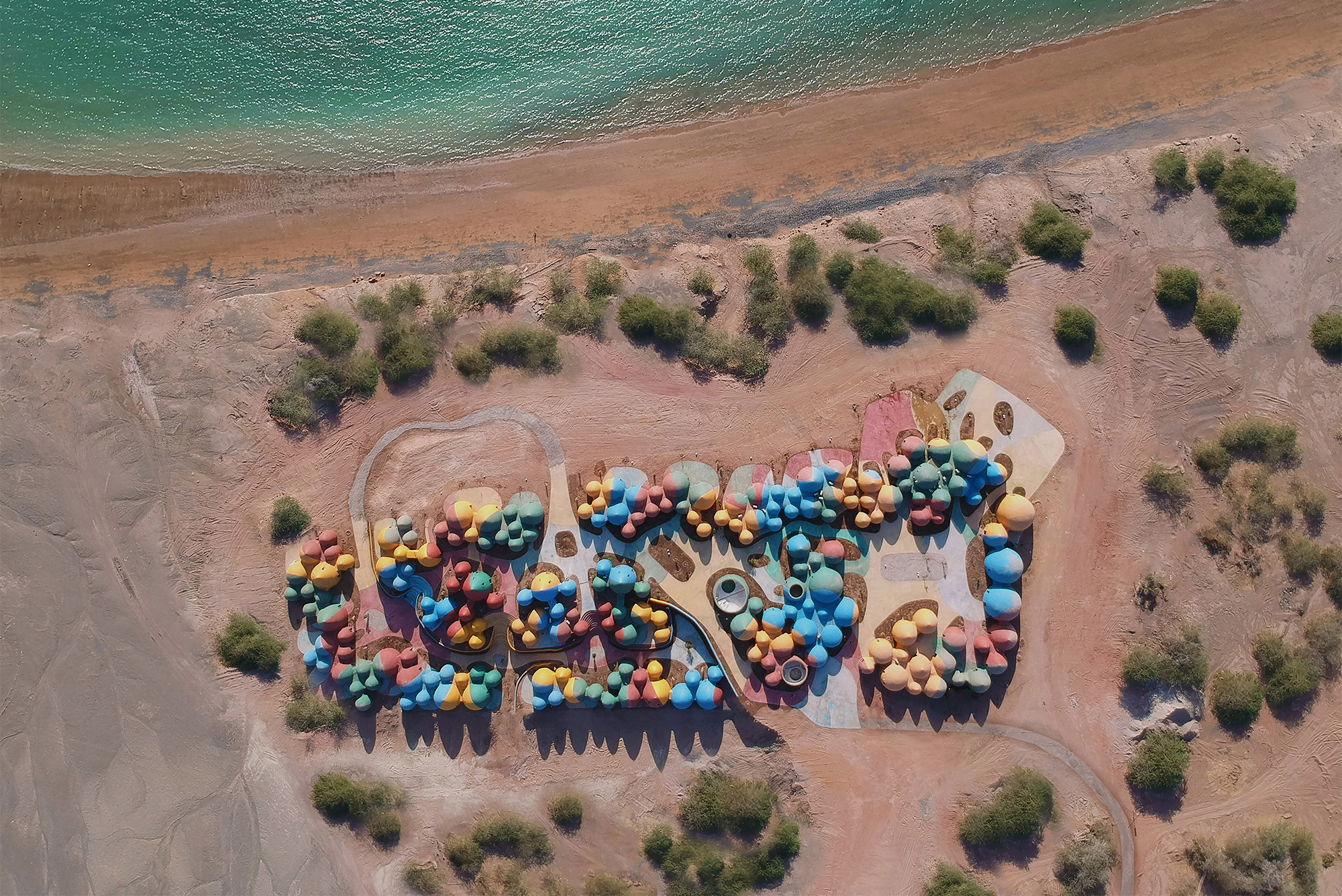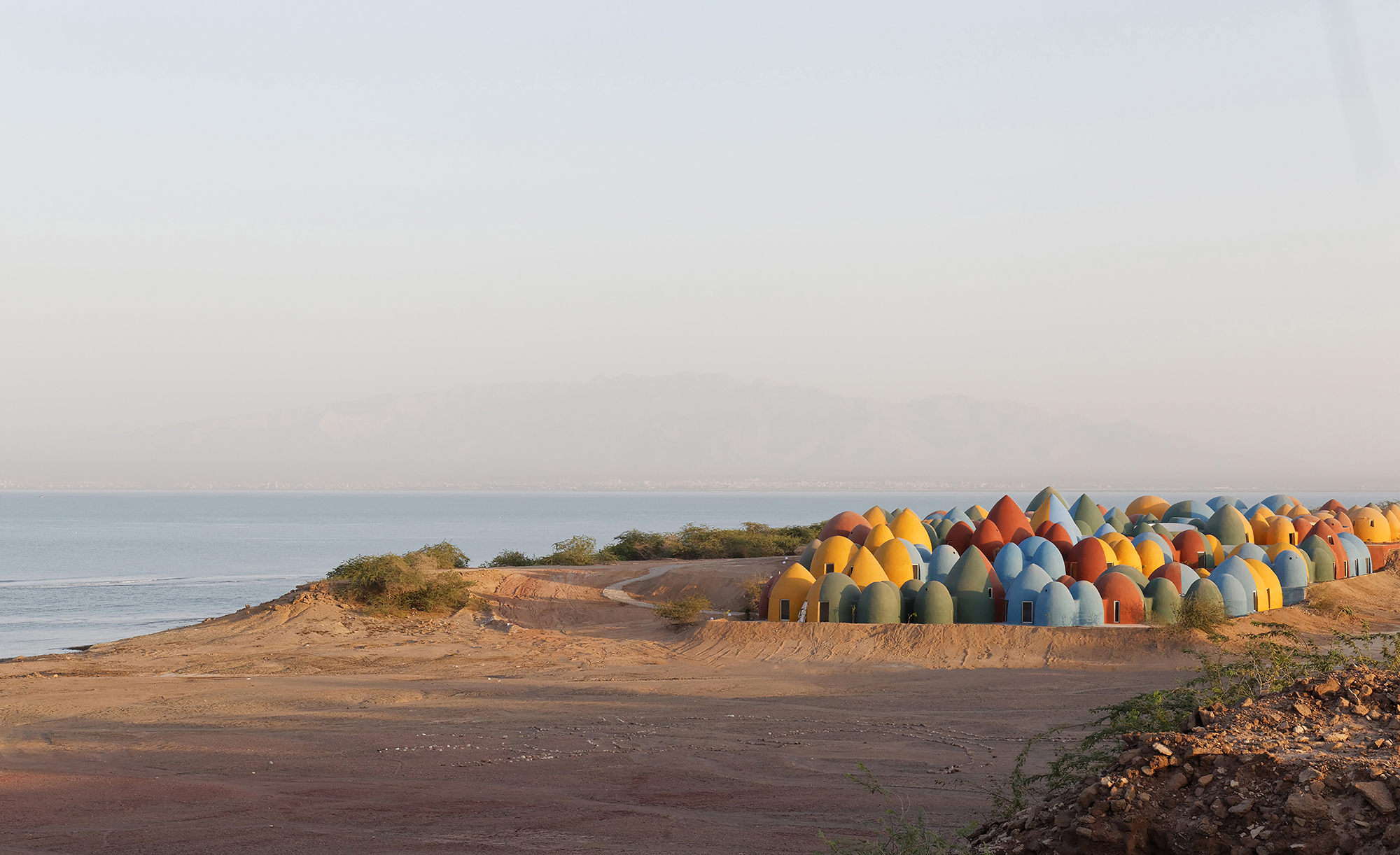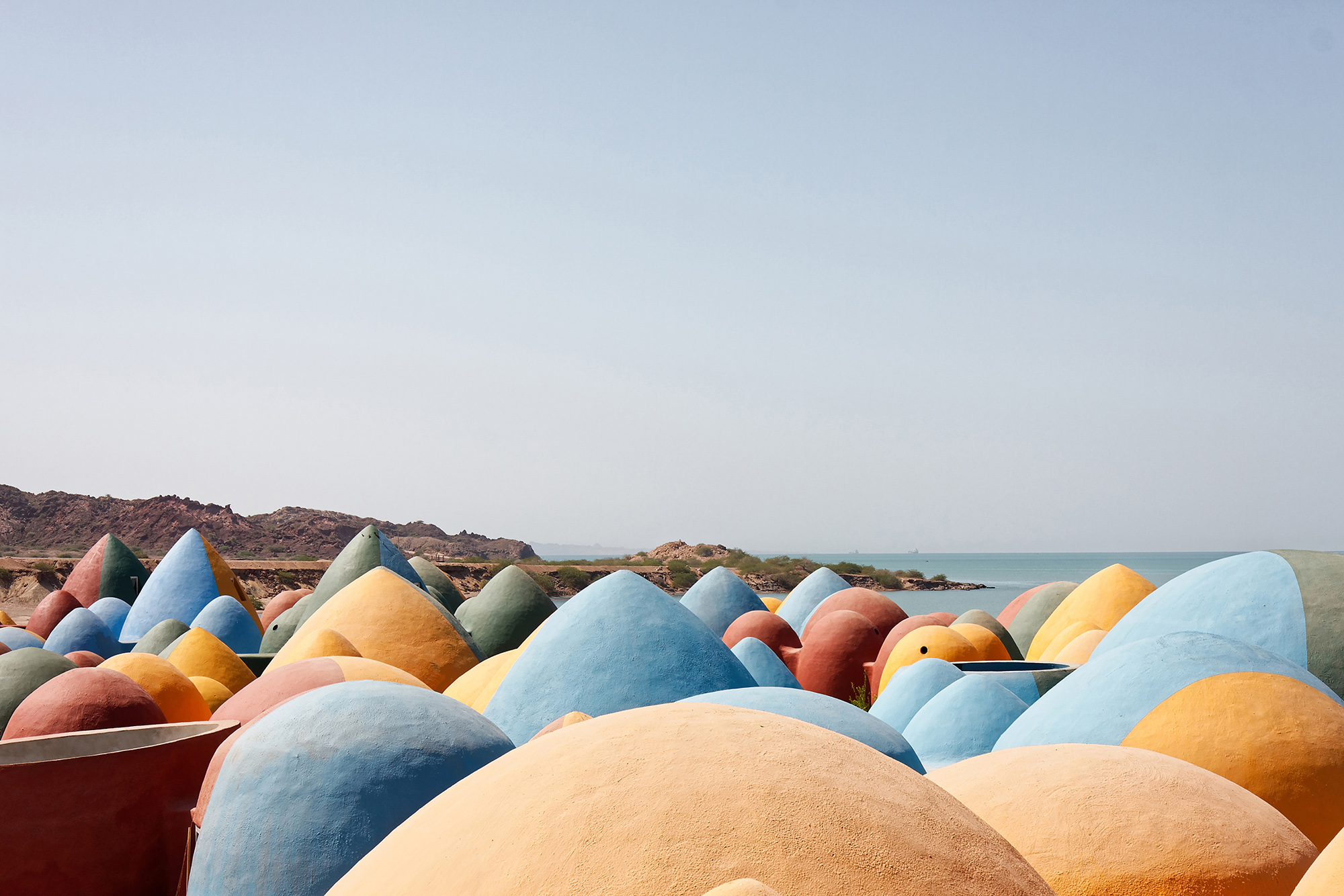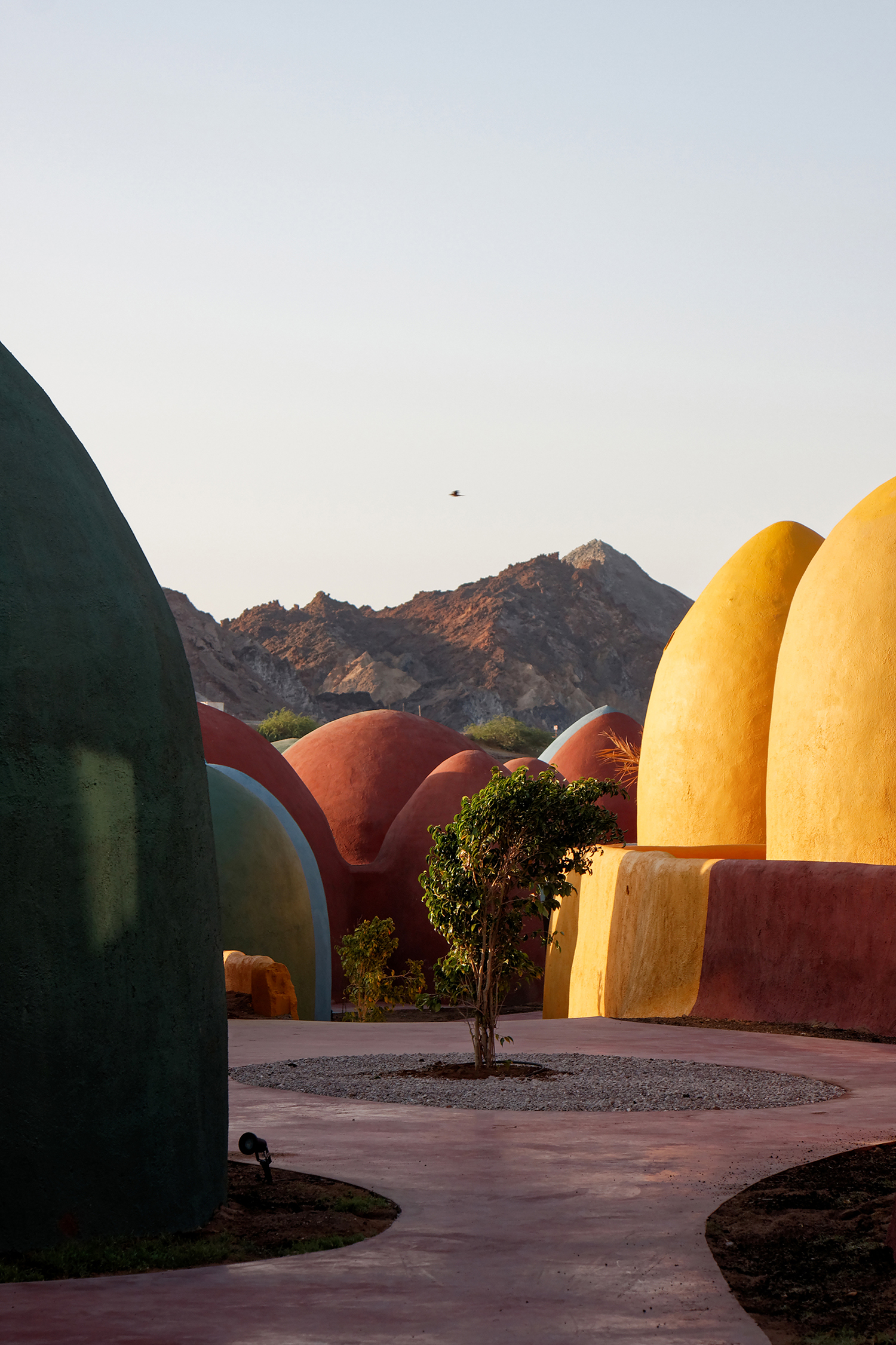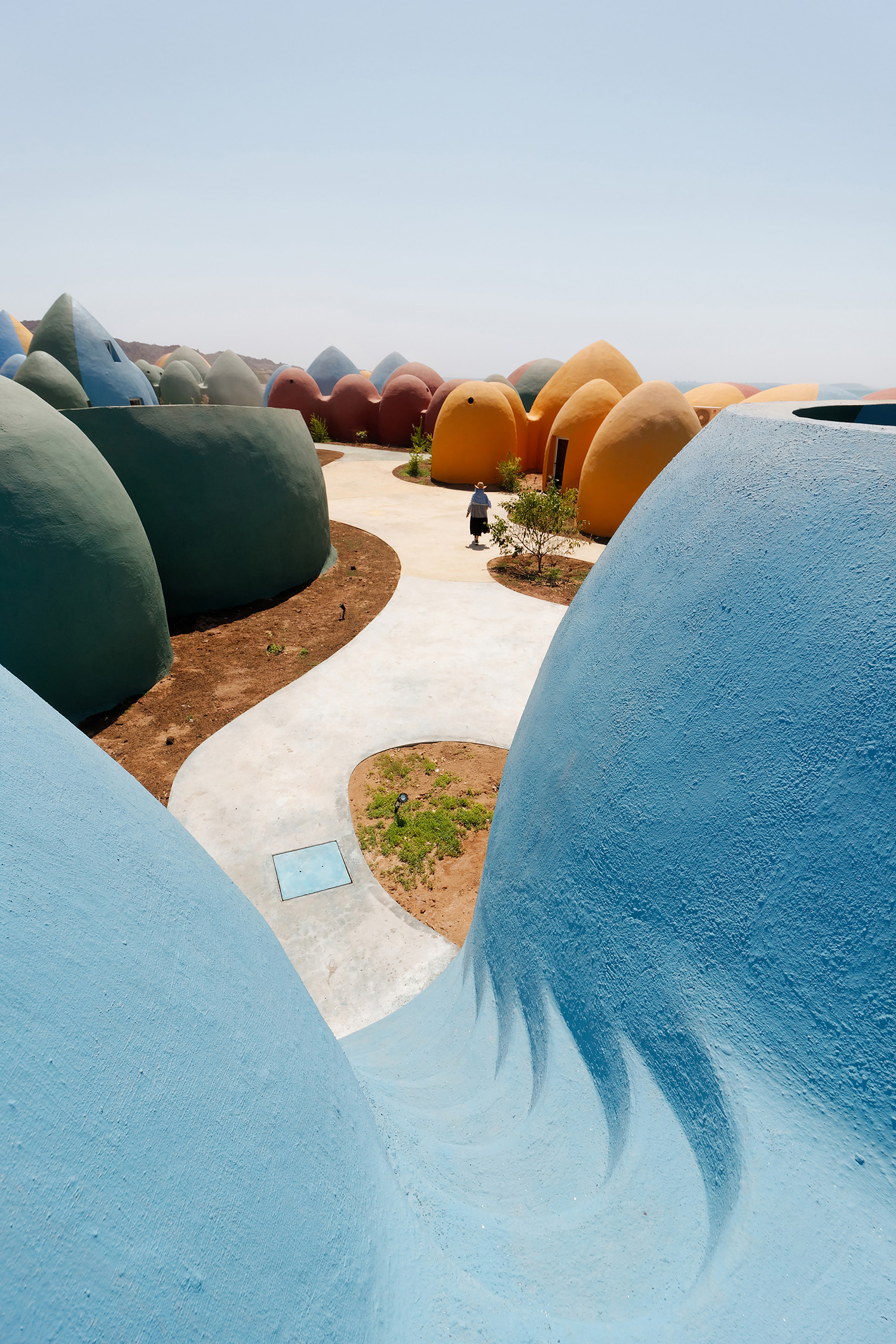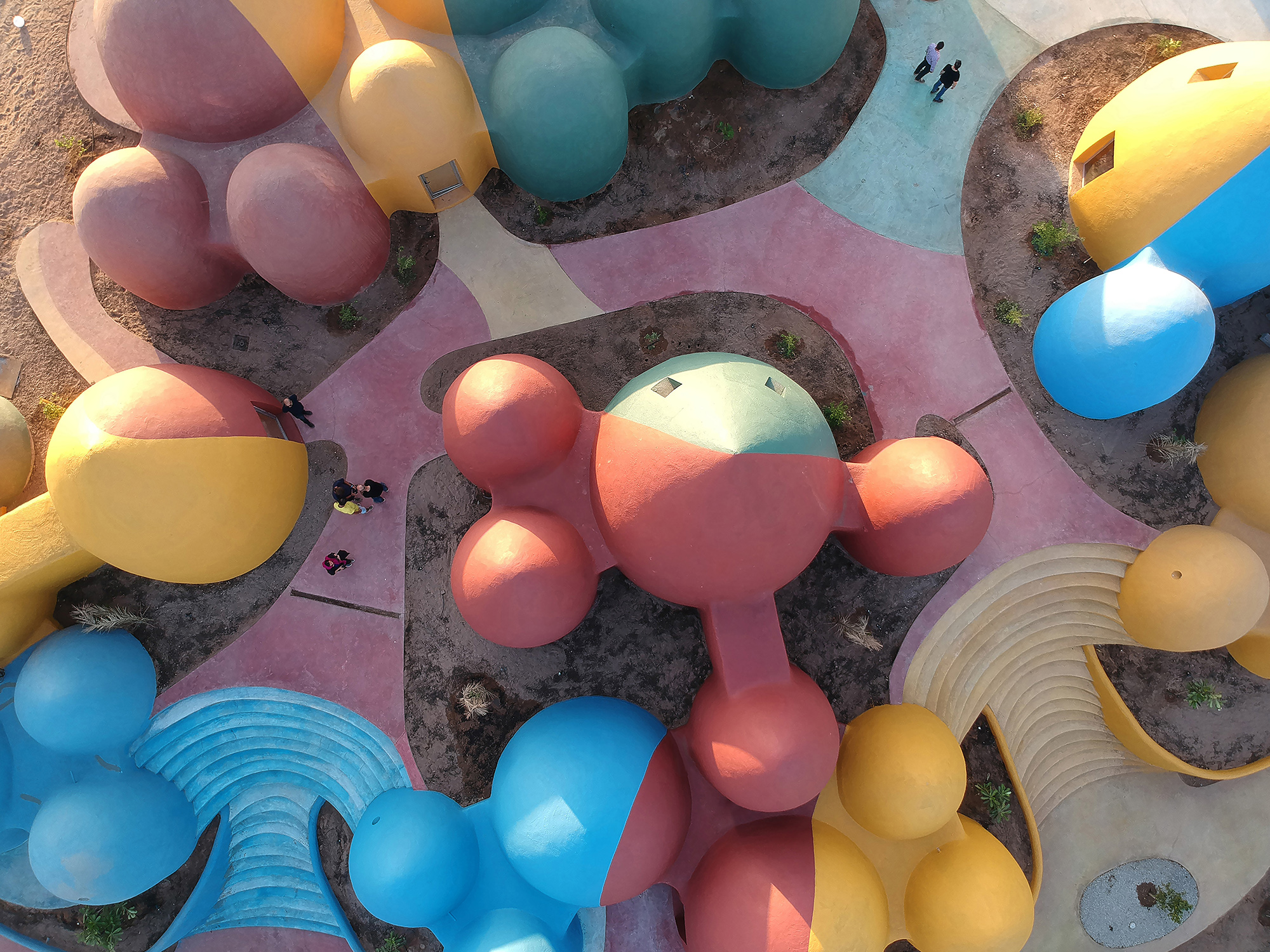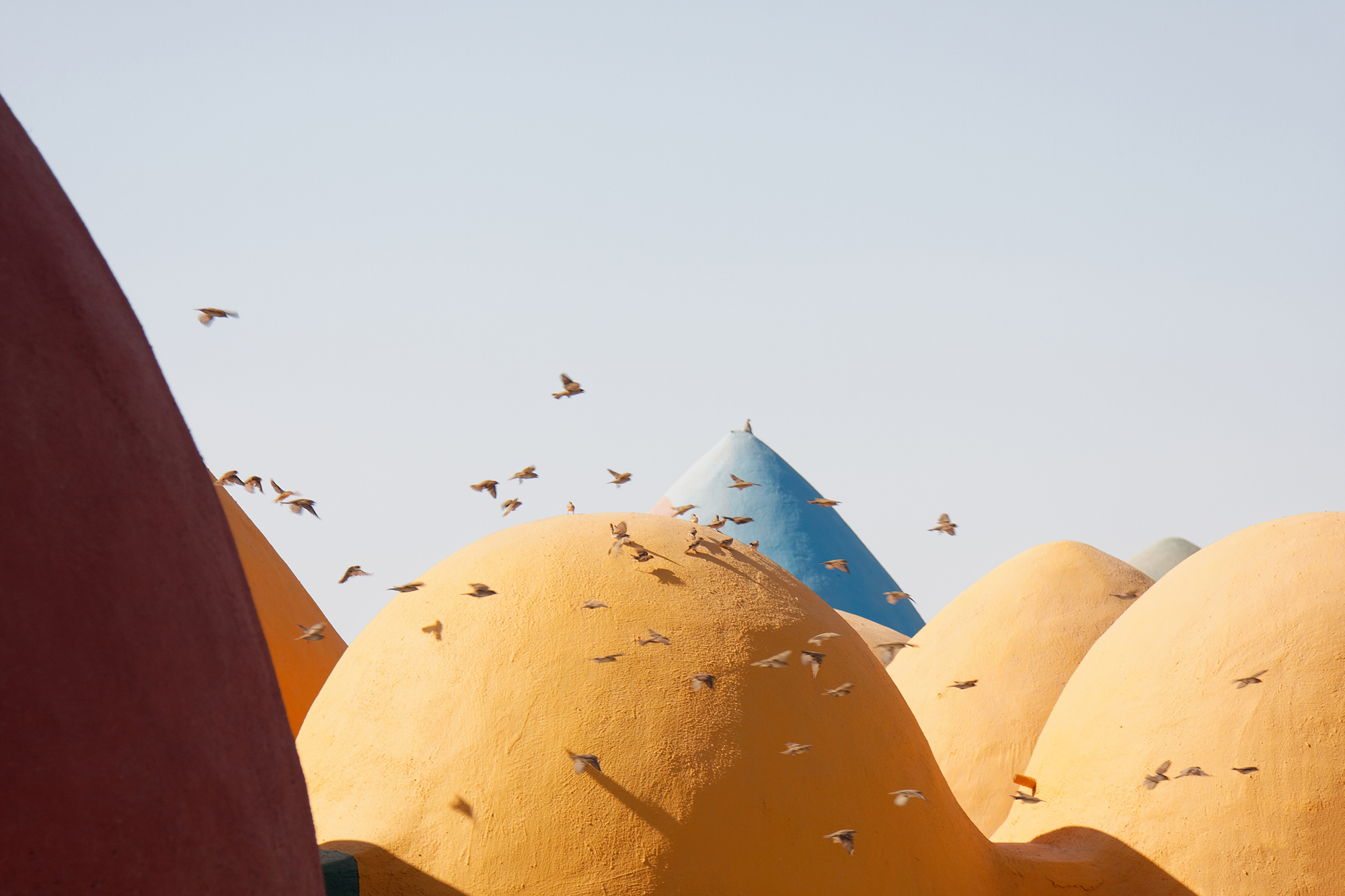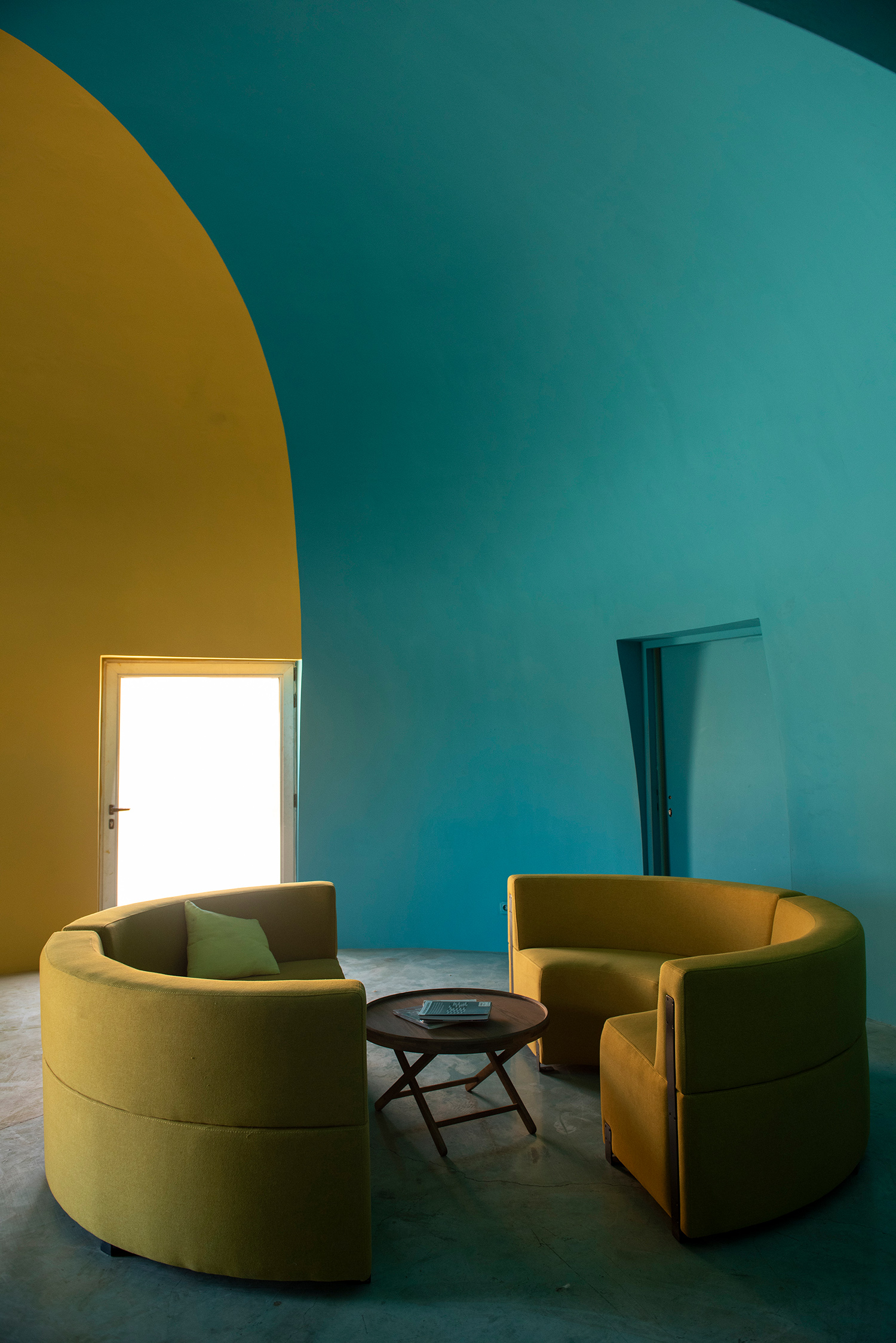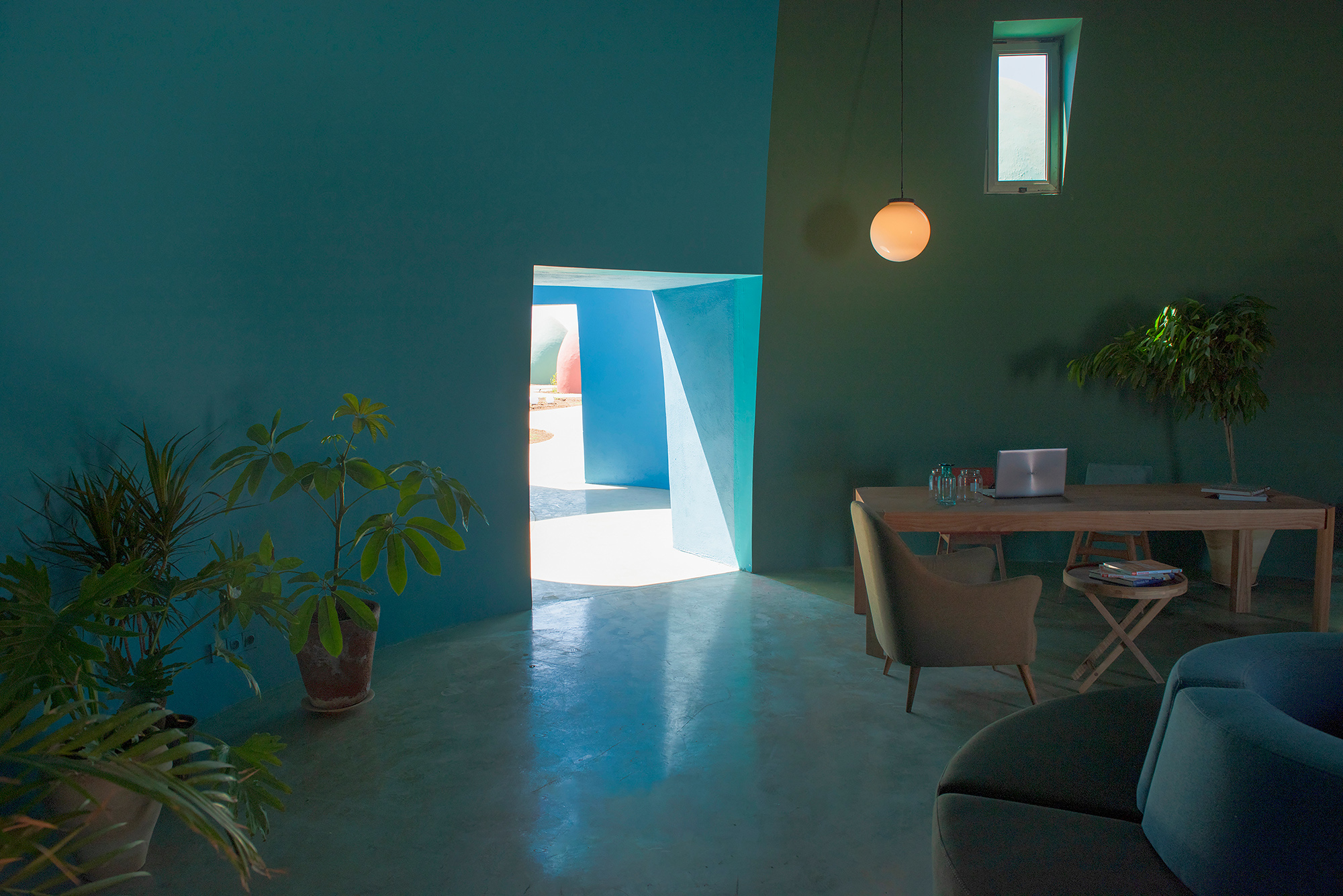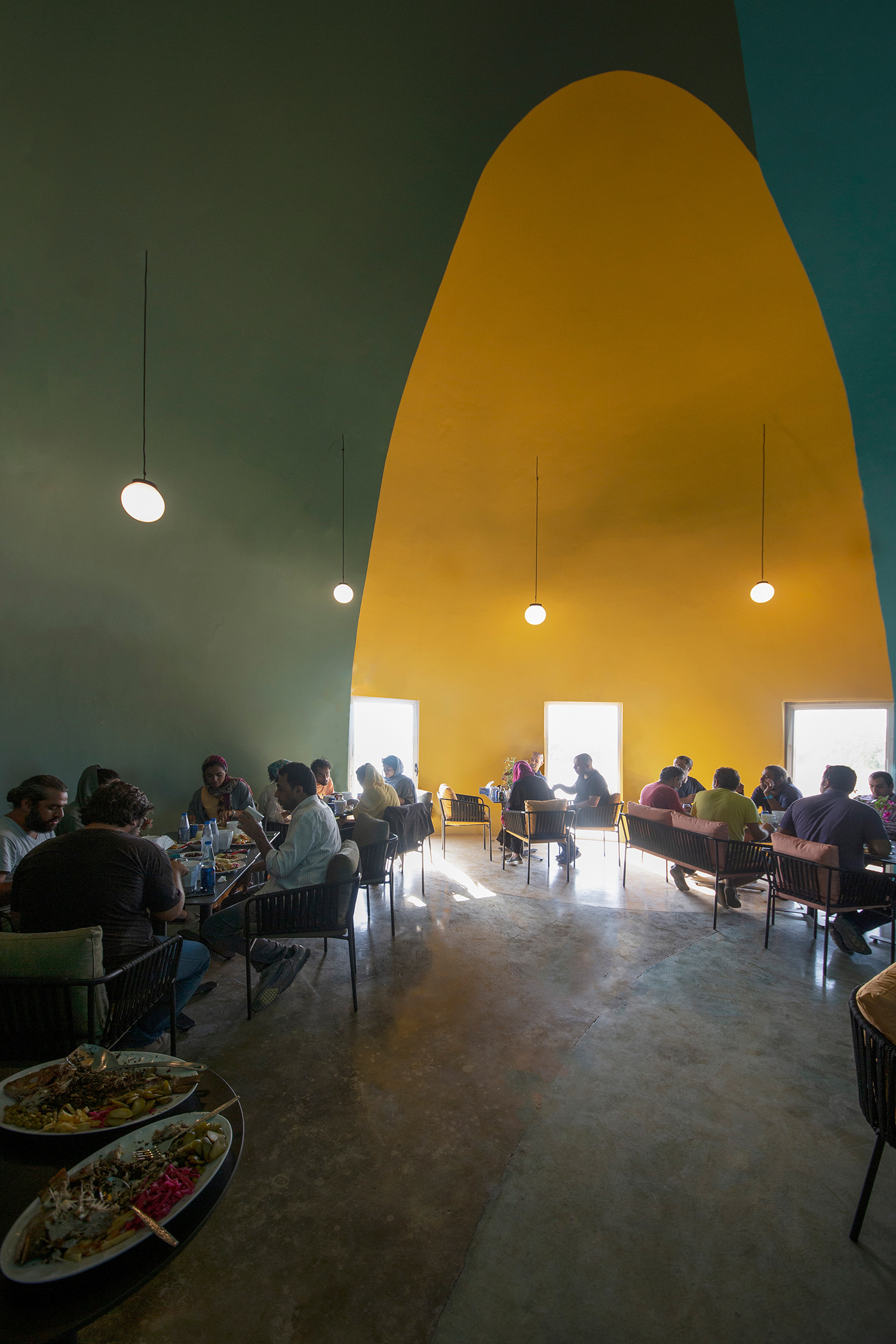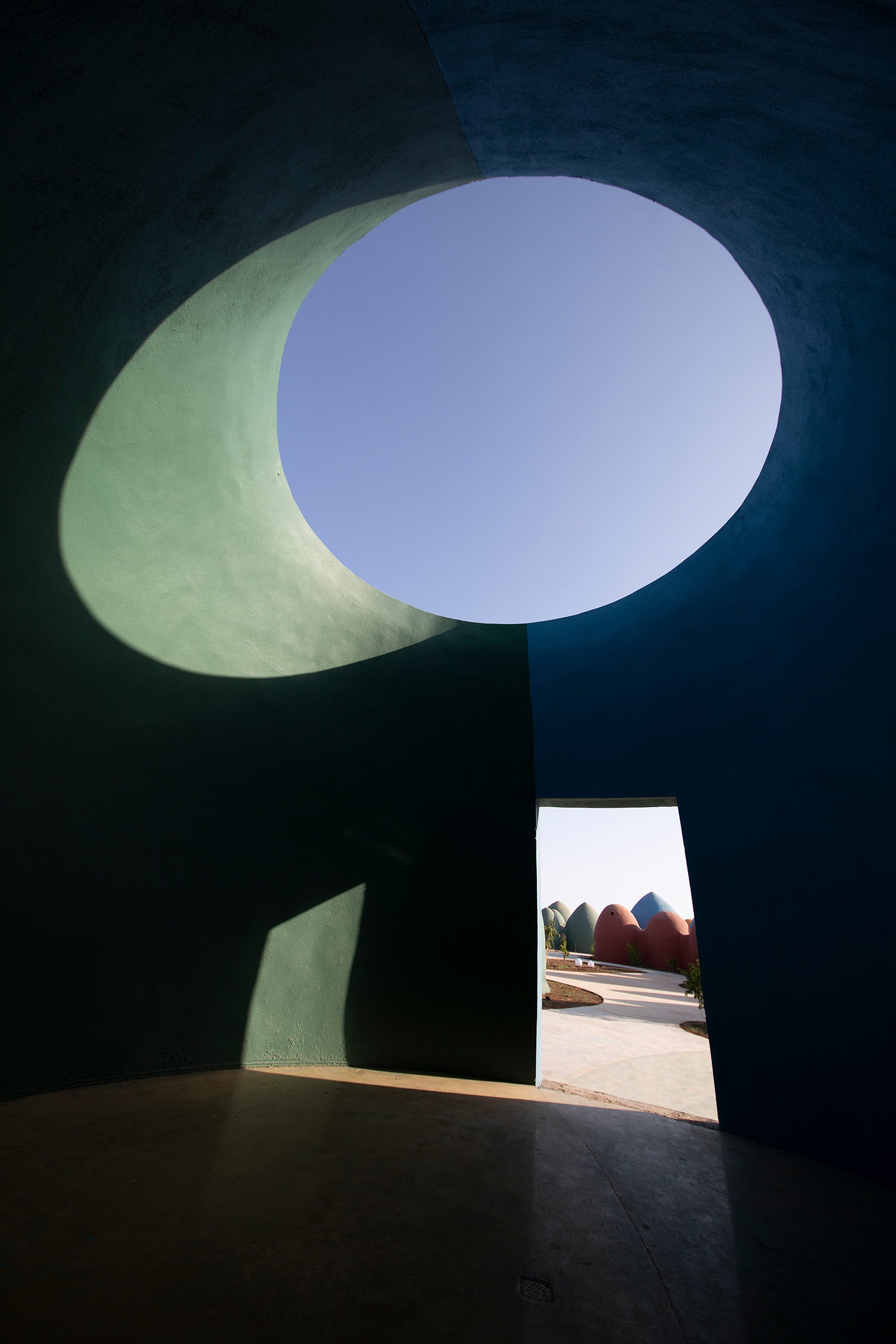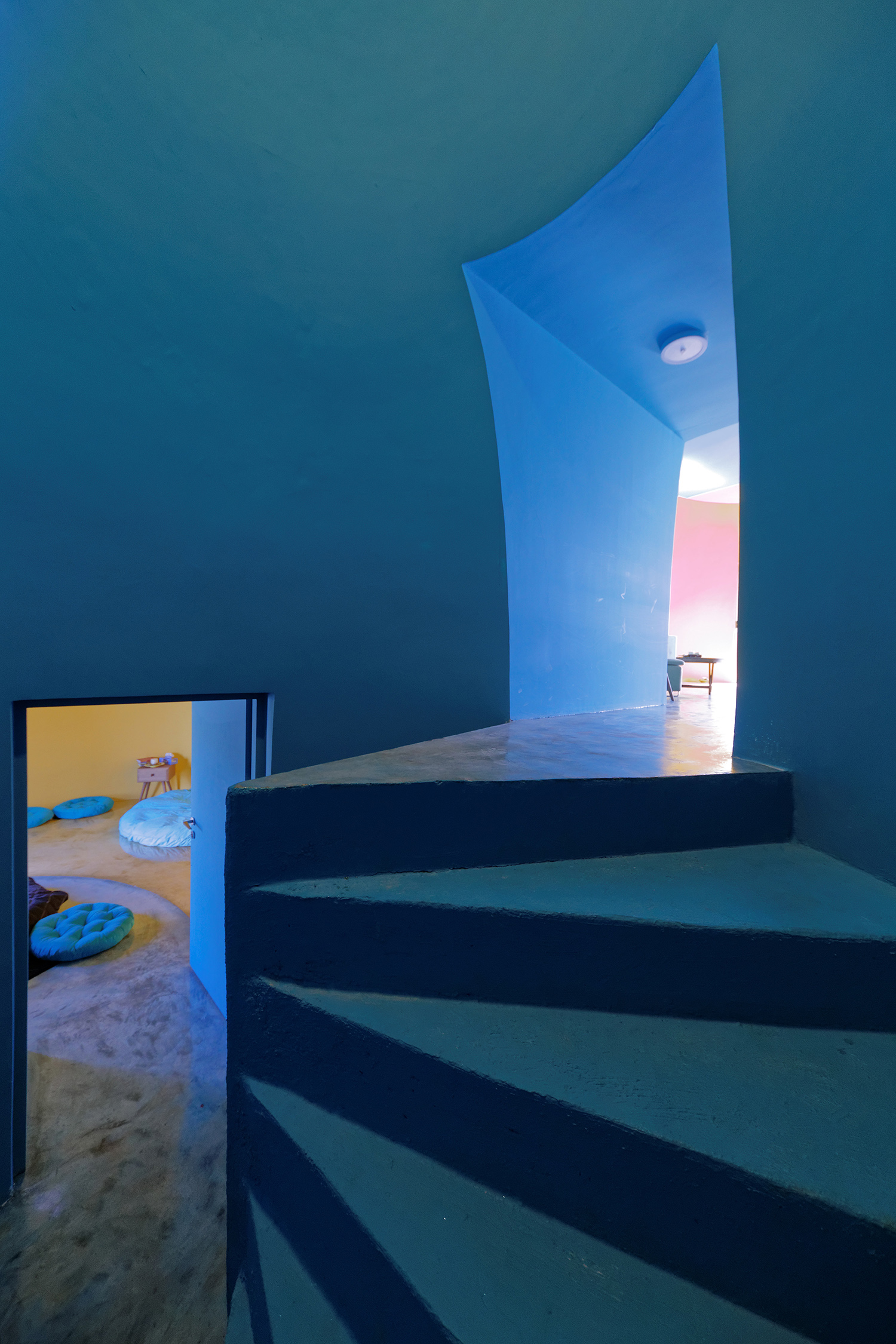A Blaze of Colour in the Strait of Hormuz

Foto: Tahmineh Monzavi, Soroush Majidi, Payman Barkhordari
Hormuz is an island in the Strait of Hormuz, which lies south of Iran in the Persian Gulf. It is bare, nearly circular and has an area of only about 42 km2. Although it has no fresh water, the island has been inhabited since ancient times because of its safe and strategically important location. Hormuz has now lost its historical significance as a prominent commercial centre, but cigarette smuggling to the United Arab Emirates is booming.
The island is blessed with an unusual landscape: sand and stone of various shades of red, yellow and blue combine with the turquoise and azure of the sea. These vivid hues have inspired travellers to call Hormuz “the rainbow island in the Persian Gulf”. Investing in tourism in order to provide the island’s residents with a secure (and legal) livelihood seems a good idea.
Travellers can now spend the night beneath around 200 domes painted blue, green, red or yellow: a clear reference to the colourful landscape. Altogether, the complex has 15 holiday apartments as well as restaurants, a café, souvenir shops and a tourist information office. The architects have also decorated the interiors in vivid colours. The green, blue, red and yellow extend right to the furnishings.
The domes have an interesting construction based on the Superadobe method developed by Nader Khalili. Tube-like sandbags are filled with earth and wound upwards into domes. Barbed wire is inserted to provide horizontal bracing. As soon as a dome has taken shape, cement plaster is applied inside and out with a technique that even untrained local workers can master.
With this project the architects, whose office is in Tehran, and the clients − a private institution − have provided development aid to the island’s inhabitants. Money is not invested in expensive building materials, but rather in labour. The participation of residents represents new job prospects and will lead to acceptance and dialogue. What’s more, the additive building method will open up potential for further developments.
More information about the SuperAdobe-construction:
https://www.calearth.org/intro-superadobe
